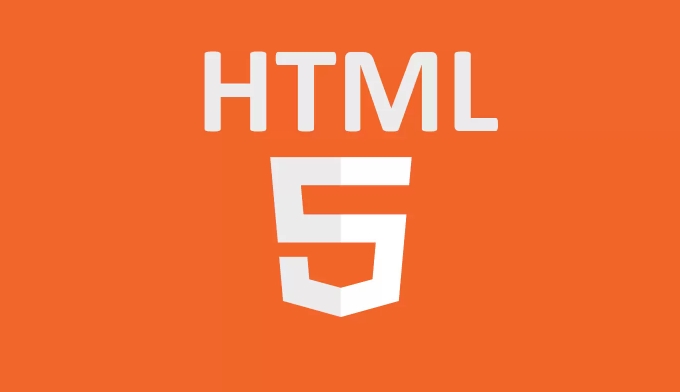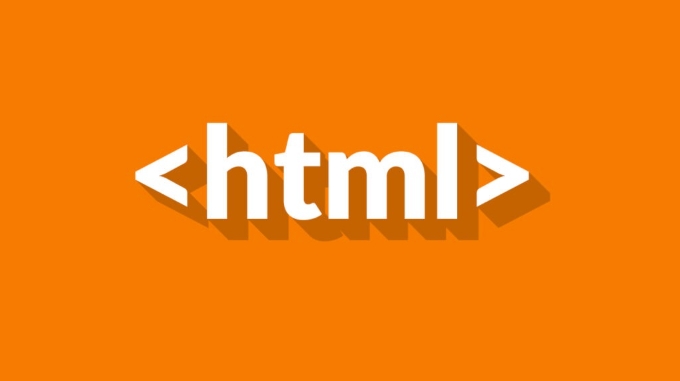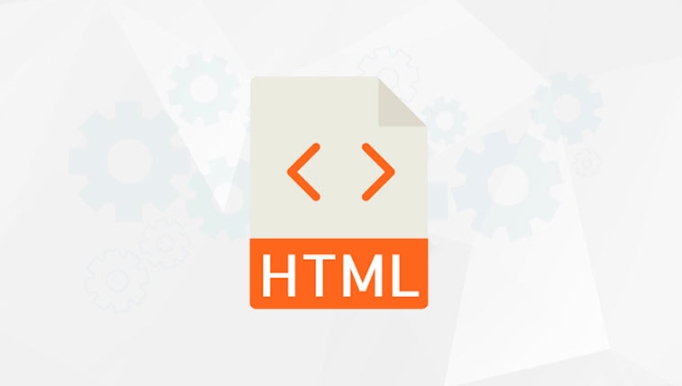The HTML structure of a single page application (SPA) needs to focus more on initial loading experience, SEO support and maintainability. 1. The basic structure should be concise and complete, including doctype declaration, html tag, head area (meta tag, title, style sheet and script reference) and mount container div in body; 2. SEO supports dynamically setting title and meta description, and add Open Graph or Twitter Card meta tags, appropriately adding key text content or combining SSR/pre-rendering to improve search engine recognition effect; 3. The first screen optimization can speed up rendering through loading animation, skeleton screen, inline key CSS and using defer/async attributes, and add noscript prompts; 4. In terms of multi-environment adaptation, the configuration differences in different environments are automatically handled through construction tools, such as introducing source Map, bury script, or compress HTML, and retain corresponding placeholders in the template to ensure that each environment is built correctly.

The HTML of single-page applications (SPAs) is different from traditional multi-page websites because it usually only loads once, and subsequent page switching is dynamically processed by JavaScript. Therefore, the structure and content of HTML need to pay more attention to initial loading experience, SEO support and maintainability.

Basic structure: simple but complete
Although there are only one or several HTML pages in SPA, the structure must be complete and clear. A typical SPA HTML file includes:
-
statement -
tags with language attributes (such aslang="en") -
contains meta tags, titles, stylesheets, and script references - There is a container div in
(such as<div id="app"></div>) for front-end framework mount
<!DOCTYPE html> <html lang="en"> <head> <meta charset="UTF-8" /> <meta name="viewport" content="width=device-width, initial-scale=1.0" /> <title>My SPA</title> <link rel="stylesheet" href="styles.css" /> </head> <body> <div id="app"></div> <script src="bundle.js"></script> </body> </html>
Note: <title> and meta descriptions should be set dynamically, so that different "pages" can have different SEO content.

SEO Support: Don't leave crawlers empty-handed
Search engine crawling SPAs was once a difficult problem. Although mainstream engines such as Google can now execute JS and read dynamic content, it is recommended to add some basic SEO tags and static information to HTML for safety reasons.
- Provide a short description using
<meta name="description" content="..."> - Add to Open Graph or Twitter Card meta tags to improve social sharing
- Appropriately add key text content to the initial HTML (even if hidden) to help crawlers identify page topics
If you use Vue, React and other frameworks to develop, it is recommended to cooperate with SSR (server-side rendering) or prerendering (prerender) solutions to further improve SEO performance.

Home screen optimization: Let users see content as soon as possible
One of the big problems with SPA is that the first screen loads slowly. Although HTML is small, if the JS file is large and the network is slow, users will see blank pages, which will affect the experience.
The following practices may be considered:
- Add loading animation or skeleton screen to
<body>to tell the user to "load" - Inline key CSS into HTML to speed up visual rendering
- Load scripts with defer or async attributes to avoid blocking rendering
- Add a
<noscript>prompt to provide basic instructions for users who disable JS
For example:
<div id="app"> <div class="loading">Loading...</div> </div> <noscript> <p>Please enable JavaScript to run this application. </p> </noscript>
Multi-environment adaptation: development, testing and production must be taken care of
In different environments, HTML may require different configurations, such as:
- Introducing source map and debugging tools in the development environment
- Test environment inserts buried scripts
- Compress HTML in the production environment and remove debugging code
Generally, these are automatically processed through construction tools (such as Webpack, Vite). You just need to make sure that the corresponding placeholder is left in the HTML template, such as:
<!-- build:css --> <link rel="stylesheet" href="dev.css" /> <!-- endbuild --> <!-- production-only --> <link rel="stylesheet" href="prod.css" /> <!-- /production-only -->
This type of tag can be automatically replaced or deleted during the build process to ensure that the HTML in each environment is correct.
Basically that's it. Although HTML seems simple in SPA, there are still many things to pay attention to in details, especially in performance and SEO, which should not be taken lightly.
The above is the detailed content of HTML for Single Page Applications (SPAs). For more information, please follow other related articles on the PHP Chinese website!

Hot AI Tools

Undress AI Tool
Undress images for free

Undresser.AI Undress
AI-powered app for creating realistic nude photos

AI Clothes Remover
Online AI tool for removing clothes from photos.

Clothoff.io
AI clothes remover

Video Face Swap
Swap faces in any video effortlessly with our completely free AI face swap tool!

Hot Article

Hot Tools

Notepad++7.3.1
Easy-to-use and free code editor

SublimeText3 Chinese version
Chinese version, very easy to use

Zend Studio 13.0.1
Powerful PHP integrated development environment

Dreamweaver CS6
Visual web development tools

SublimeText3 Mac version
God-level code editing software (SublimeText3)
 Implementing Clickable Buttons Using the HTML button Element
Jul 07, 2025 am 02:31 AM
Implementing Clickable Buttons Using the HTML button Element
Jul 07, 2025 am 02:31 AM
To use HTML button elements to achieve clickable buttons, you must first master its basic usage and common precautions. 1. Create buttons with tags and define behaviors through type attributes (such as button, submit, reset), which is submitted by default; 2. Add interactive functions through JavaScript, which can be written inline or bind event listeners through ID to improve maintenance; 3. Use CSS to customize styles, including background color, border, rounded corners and hover/active status effects to enhance user experience; 4. Pay attention to common problems: make sure that the disabled attribute is not enabled, JS events are correctly bound, layout occlusion, and use the help of developer tools to troubleshoot exceptions. Master this
 Configuring Document Metadata Within the HTML head Element
Jul 09, 2025 am 02:30 AM
Configuring Document Metadata Within the HTML head Element
Jul 09, 2025 am 02:30 AM
Metadata in HTMLhead is crucial for SEO, social sharing, and browser behavior. 1. Set the page title and description, use and keep it concise and unique; 2. Add OpenGraph and Twitter card information to optimize social sharing effects, pay attention to the image size and use debugging tools to test; 3. Define the character set and viewport settings to ensure multi-language support is adapted to the mobile terminal; 4. Optional tags such as author copyright, robots control and canonical prevent duplicate content should also be configured reasonably.
 Best HTML tutorial for beginners in 2025
Jul 08, 2025 am 12:25 AM
Best HTML tutorial for beginners in 2025
Jul 08, 2025 am 12:25 AM
TolearnHTMLin2025,chooseatutorialthatbalanceshands-onpracticewithmodernstandardsandintegratesCSSandJavaScriptbasics.1.Prioritizehands-onlearningwithstep-by-stepprojectslikebuildingapersonalprofileorbloglayout.2.EnsureitcoversmodernHTMLelementssuchas,
 HTML for email templates tutorial
Jul 10, 2025 pm 02:01 PM
HTML for email templates tutorial
Jul 10, 2025 pm 02:01 PM
How to make HTML mail templates with good compatibility? First, you need to build a structure with tables to avoid using div flex or grid layout; secondly, all styles must be inlined and cannot rely on external CSS; then the picture should be added with alt description and use a public URL, and the buttons should be simulated with a table or td with background color; finally, you must test and adjust the details on multiple clients.
 How to associate captions with images or media using the html figure and figcaption elements?
Jul 07, 2025 am 02:30 AM
How to associate captions with images or media using the html figure and figcaption elements?
Jul 07, 2025 am 02:30 AM
Using HTML sums allows for intuitive and semantic clarity to add caption text to images or media. 1. Used to wrap independent media content, such as pictures, videos or code blocks; 2. It is placed as its explanatory text, and can be located above or below the media; 3. They not only improve the clarity of the page structure, but also enhance accessibility and SEO effect; 4. When using it, you should pay attention to avoid abuse, and apply to content that needs to be emphasized and accompanied by description, rather than ordinary decorative pictures; 5. The alt attribute that cannot be ignored, which is different from figcaption; 6. The figcaption is flexible and can be placed at the top or bottom of the figure as needed. Using these two tags correctly helps to build semantic and easy to understand web content.
 What are the most commonly used global attributes in html?
Jul 10, 2025 am 10:58 AM
What are the most commonly used global attributes in html?
Jul 10, 2025 am 10:58 AM
class, id, style, data-, and title are the most commonly used global attributes in HTML. class is used to specify one or more class names to facilitate style setting and JavaScript operations; id provides unique identifiers for elements, suitable for anchor jumps and JavaScript control; style allows for inline styles to be added, suitable for temporary debugging but not recommended for large-scale use; data-properties are used to store custom data, which is convenient for front-end and back-end interaction; title is used to add mouseover prompts, but its style and behavior are limited by the browser. Reasonable selection of these attributes can improve development efficiency and user experience.
 How to handle forms submission in HTML without a server?
Jul 09, 2025 am 01:14 AM
How to handle forms submission in HTML without a server?
Jul 09, 2025 am 01:14 AM
When there is no backend server, HTML form submission can still be processed through front-end technology or third-party services. Specific methods include: 1. Use JavaScript to intercept form submissions to achieve input verification and user feedback, but the data will not be persisted; 2. Use third-party serverless form services such as Formspree to collect data and provide email notification and redirection functions; 3. Use localStorage to store temporary client data, which is suitable for saving user preferences or managing single-page application status, but is not suitable for long-term storage of sensitive information.
 Implementing Native Lazy Loading for Images in HTML
Jul 12, 2025 am 12:48 AM
Implementing Native Lazy Loading for Images in HTML
Jul 12, 2025 am 12:48 AM
Native lazy loading is a built-in browser function that enables lazy loading of pictures by adding loading="lazy" attribute to the tag. 1. It does not require JavaScript or third-party libraries, and is used directly in HTML; 2. It is suitable for pictures that are not displayed on the first screen below the page, picture gallery scrolling add-ons and large picture resources; 3. It is not suitable for pictures with first screen or display:none; 4. When using it, a suitable placeholder should be set to avoid layout jitter; 5. It should optimize responsive image loading in combination with srcset and sizes attributes; 6. Compatibility issues need to be considered. Some old browsers do not support it. They can be used through feature detection and combined with JavaScript solutions.






